The Dutch newspapers have been repeating the same message for a while: the decreasing availability of staff in a variety of industries results in problems we can’t ignore. Due to staff shortages in public transportation, for example, tunnels are closing and airport queues are growing. And restaurants are (partly) closing their doors because the hospitality industry is struggling with the same issue. How have we arrived at this point?
Staff shortages: reality or illusion?
For the sceptics among us, let’s start with some facts. Staff shortages are real. Figure 1 (see below) shows the number of vacancies per 100 unemployed people per quarter. This number has grown since approximately 2014. When the pandemic hit, the problem paradoxically became less urgent. But as of late 2020, the number of vacancies has increased. In the fourth quarter of 2021 it even surpassed the number of unemployed people. And in the first quarter of 2022, there were 133 vacancies per 100 unemployed people — the highest number in the past 10 years.
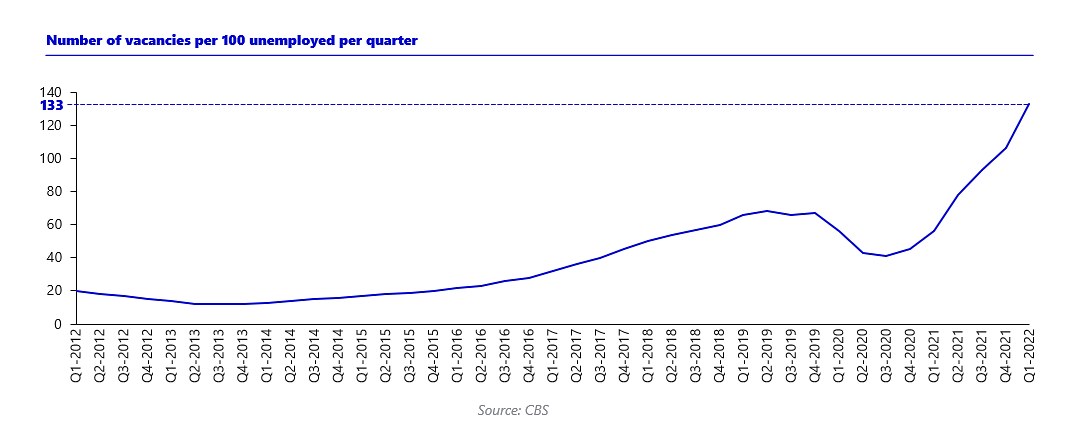
Industries that saw the most vacancies were trade, business, and healthcare. The biggest increase (1.5 times as much as the preceding quarter) occurred in the hospitality sector: the number of vacancies rose from 30,000 in the last quarter of 2021 to 45,000 in the first quarter of 2022.
In the education sector, the number of vacancies stayed roughly the same in the first three months of 2022. But no industry saw a decrease in the number of vacancies during this quarter.
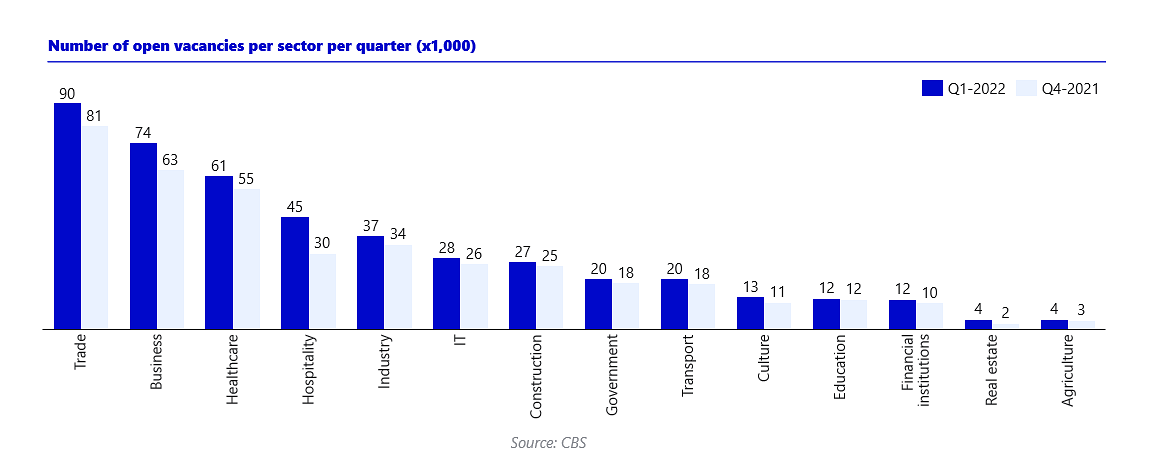
An imbalance between supply and demand
The aging of the population is one of the main reasons for the tension in the labor market. The percentage of people aged 65 and over is increasing in the Netherlands, and it looks like this trend will continue in the coming years. CPB Netherlands Bureau for Economic Policy Analysis has calculated that population growth of those aged 15 to 75 will level off within the next few years, and aging will further slow down labor supply.
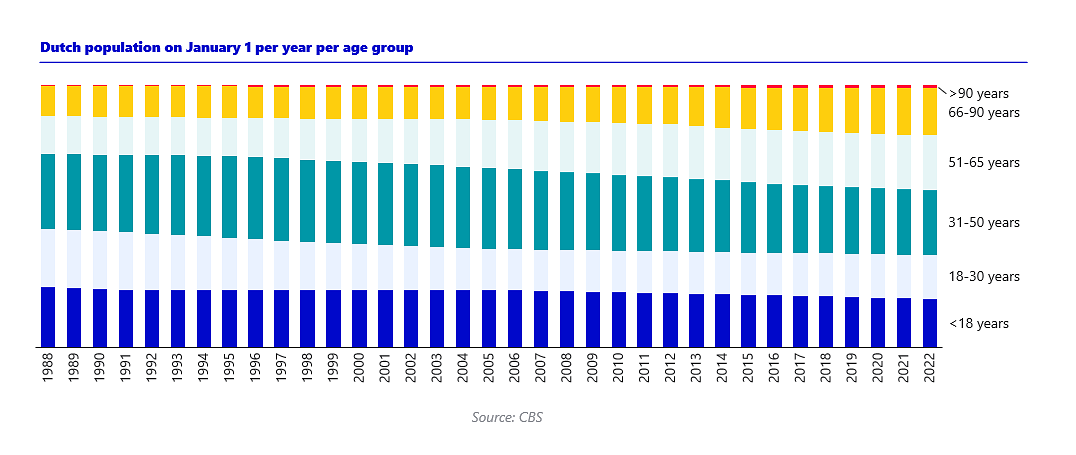
Of course, the pandemic plays a role, too. In 2020, the Dutch spent less money than in 2019. But in 2021 and 2022, they spent more. In April 2022, domestic consumption was 15% higher than in the preceding year. As all this consumption should be met, there is an increased demand for labor.
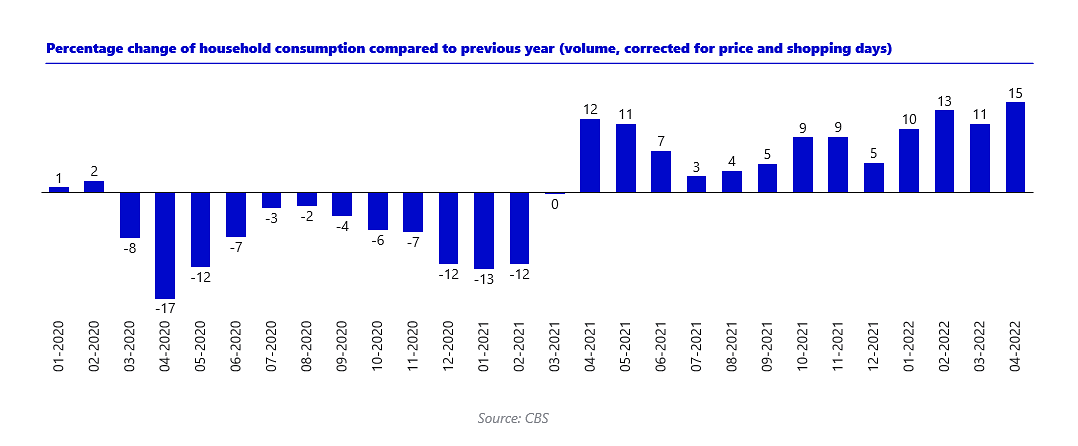
At the same time, many people have lost their jobs during the pandemic — especially those working in the hospitality industry. We can’t tell where each of them is employed now, but they clearly haven’t returned to their old jobs. Furthermore, absenteeism due to illness has increased. In the first quarter, the Netherlands saw its highest percentage ever: 6.3%. The industries that saw exceptionally high percentages were those where remote working is difficult: healthcare, trade, education, and hospitality.
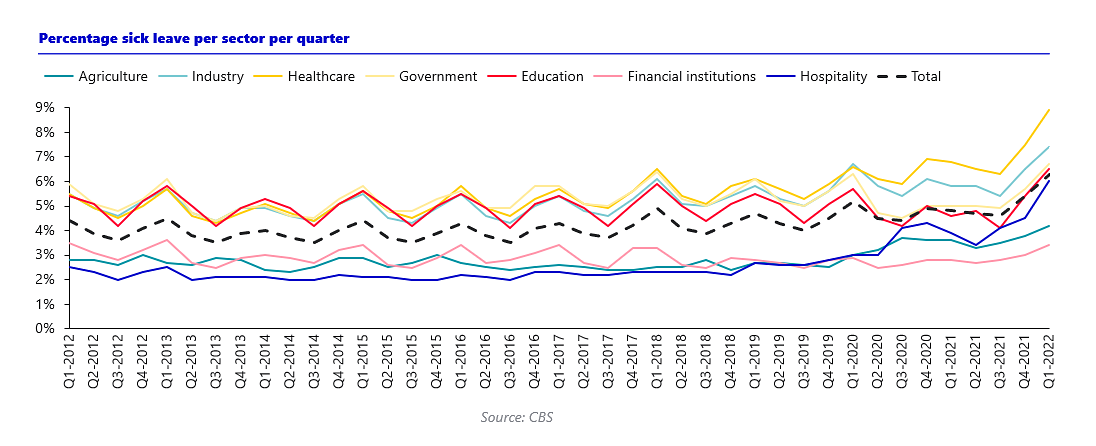
What’s next?
This problem is not exclusive to the Netherlands. Therefore, the European Commission has proposed measures to facilitate labor migration. Moreover, the Ministry of Social Affairs and Employment is taking measures to better match supply and demand, increase supply, and reduce demand.
Does that mean the issue of staff shortages will be solved once and for all? Probably not. Of course, these measures will help. But the aging of the population will continue. Moreover, changes in consumption will not disappear, and the urge to scale down staff in economically challenging times will persist. But hopefully, we have learned some lessons about scaling up staff in a timely manner

